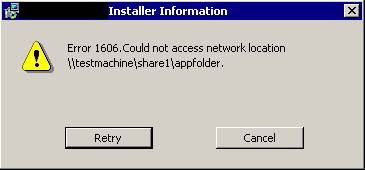There’s an interesting opinion piece by Kathleen Dollard in last month’s Visual Studio magazine. The latest issue has another piece by Kathleen that is very similar. There’s no link to the latest one, because that issue has just come out (I got mine not 30 minutes ago).
In them, she’s essentially saying that the .NET framework, and all the various supporting enterprise frameworks, have become so large that no one can hope to be competent enough in them to be able to intelligently determine what to use, when to use it and when to stay away.
I couldn’t agree more. But despite comments in the article that she is “more optimistic today” and that “the revolution has begun”, I still come away from the articles sensing a muted dread. Fear that suddenly, skills you possess today and have honed over the years will become worthless. The value of the knowledge you currently have is drying up like last weeks doughnut holes.
And I’m just not down with that.
The fact is, my experiences seem to suggest that the less you know about these high level frameworks, the better off you are. I’m not saying don’t get familiar with them. I’m saying that if you spend time to learn the basics of computer functionality, hardware, interfaces, binary, and object oriented principles like encapsulation, polymorphism and inheritance, details of specific frameworks just tend to come out in the wash.
On the other hand, if you spend all your time focusing on a specific framework, when it’s no longer de rigeur, you’re screwed.
Microsoft has created some great stuff, to be sure, and some of the newest bits out of the pipe certainly seem compelling, WPF probably more so than anything else. But it’s also thrown out plenty of red herrings, costing companies untold money before people realized that “the silver bullet of the day” probably wasn’t a good idea after all.
Back to the knowledge issue though. When VB1 came out, and only a bit later VB3, everyone exclamed at how great it was because “you didn’t have to know the nuts and bolts of the Windows API to get something built for Windows”. Which was true, unless you wanted to build an program you could actually do something with.
The fact is, VB was like that first step down into the pool. It lets you get your feet wet and get used to cold water before you dive in headfirst. Plus you get to feel for sure whether there’s any water in the pool.
But eventually, you either dive in, or you decide you don’t like programming.
VB.Net has always been more like the diving board. You either walk away, or you dive in, and you won’t know if there’s water in the pool till you feel it or you bash your skull on the gunite.
I think there’s a bigger issue here, though. Emphasizing all these layers of Linq, Sharepoint, WPF, WF, WCF, Ajax, and blah blah blah, won’t help encourage anyone to dive in, and that’s what VB.net needs to be doing. Instead we get, what, the MY classes. Puh..leaze! At least edit and continue finally came back with VS 2005. Where’s the genius that decided it’d be a good idea to leave it out in the first VS releases, anyway?
Don’t get me wrong. You can create some hardcore stuff with VB.Net, a lot easier than was ever possible in VB. But you get some hardcore baggage coming along for the ride too. And that’s unfortunate, because falling CS enrollments may mean a pretty sweet employment future for me, but it bodes some not so sweet prospects for our long term technological advancement as a nation.
And dammit, I want my flying car before I GOTO END !








